Long-term outcomes after allogeneic hematopoietic stem cell transplantation for metachromatic leukodystrophy: the largest single-institution cohort report
- PMID: 26245762
- PMCID: PMC4545855
- DOI: 10.1186/s13023-015-0313-y
Long-term outcomes after allogeneic hematopoietic stem cell transplantation for metachromatic leukodystrophy: the largest single-institution cohort report
Abstract
Background: Metachromatic Leukodystrophy (MLD) is a rare, fatal demyelinating disorder with limited treatment options. Published outcomes after hematopoietic stem cell transplantation (HSCT) are scant and mixed. We report survival and function following HSCT for a large, single-center MLD cohort.
Methods: Transplant-related data, survival and serial measures (brain MRI, nerve conduction velocity (NCV), neurologic and neuropsychology evaluations) were reviewed. When possible, parental interviews informed current neurologic status, quality-of-life, and adaptive functioning. Gross motor and expressive functions for late-infantile (LI-MLD) and juvenile (J-MLD) patients were described using previously reported, MLD-specific scales.
Results: Forty patients with confirmed MLD have undergone HSCT at our center. Twenty-one (53 %) survive at a median 12 years post-HSCT. Most deaths (n = 17) were treatment-related; two died from disease progression. Survival did not depend upon MLD subtype or symptom status at transplant. LI-MLD patients survive beyond reported life expectancy in untreated disease. Abnormal brain MRI and peripheral nerve conduction velocities (NCV) were common before HSCT. Following transplant, fewer patients experienced MRI progression compared to NCV deterioration. Sixteen LI-MLD and J-MLD survivors were evaluable for long-term gross motor and/or expressive language functioning using existing MLD clinical scoring systems. While most J-MLD patients regressed, the aggregate cohort demonstrated superior retention of function compared to published natural history. Seventeen LI-MLD, J-MLD and adult subtype (A-MLD) survivors were evaluable for long-term adaptive functioning, activities of daily living, and/or cognition. Relative cognitive sparing was observed despite overall global decline. Five sibling pairs (one LI-MLD and four J-MLD), in which at least one underwent transplant in our cohort, were evaluable. Within each familial dyad, survival or function was superior for the treated sibling, or if both siblings were transplanted, for the pre-symptomatic sibling.
Conclusions: HSCT is a viable treatment option for MLD, but has significant limitations. Later-onset phenotypes may benefit most from early, pre-symptomatic transplant. Until superior, novel treatment strategies are demonstrated, MLD patients should be carefully considered for HSCT.
Figures
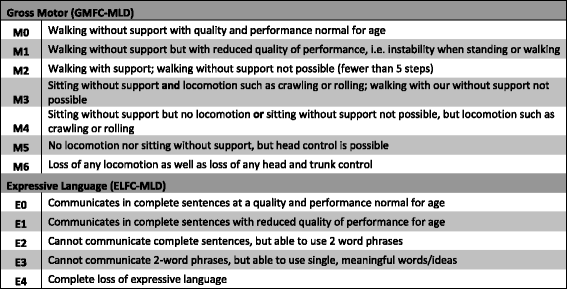

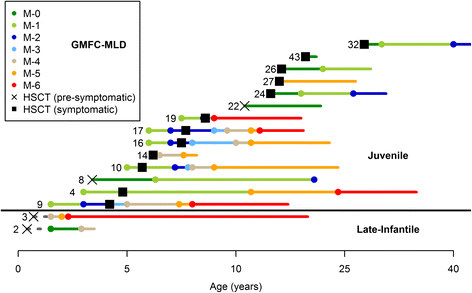
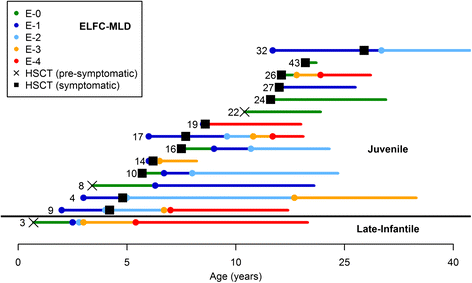
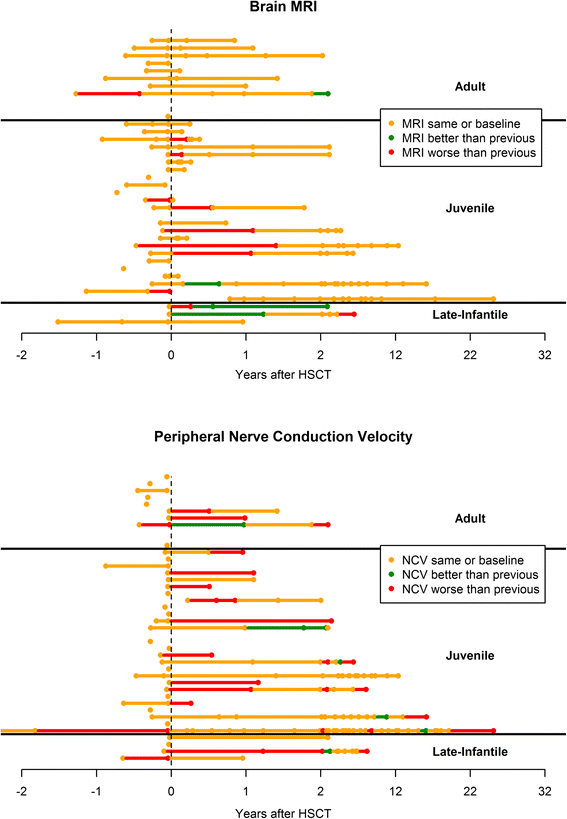
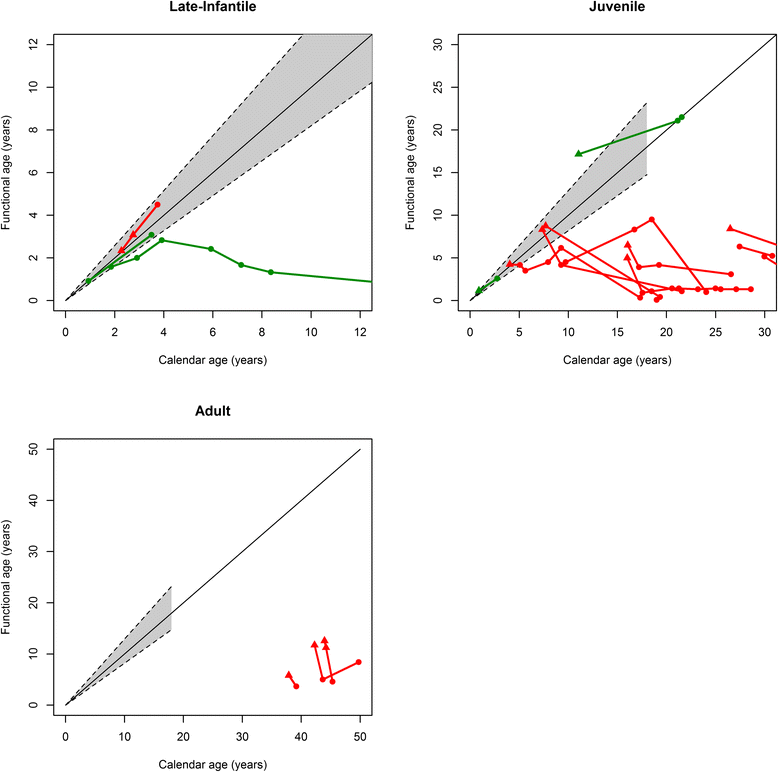
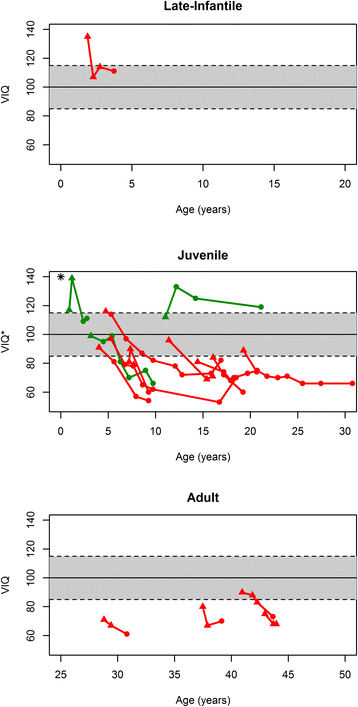
References
-
- von Figura K, Gieselmann V, Jaeken J. Metachromatic Leukodystrophy. In: Scriver C, Beaudet A, Sly W, Valle D, editors. The Metabolic and Molecular Bases of Inherited Diseases, Eighth Edition. 8. New York: McGraw-Hill; 2001.
Publication types
MeSH terms
Grants and funding
LinkOut - more resources
Full Text Sources
Other Literature Sources
Medical

